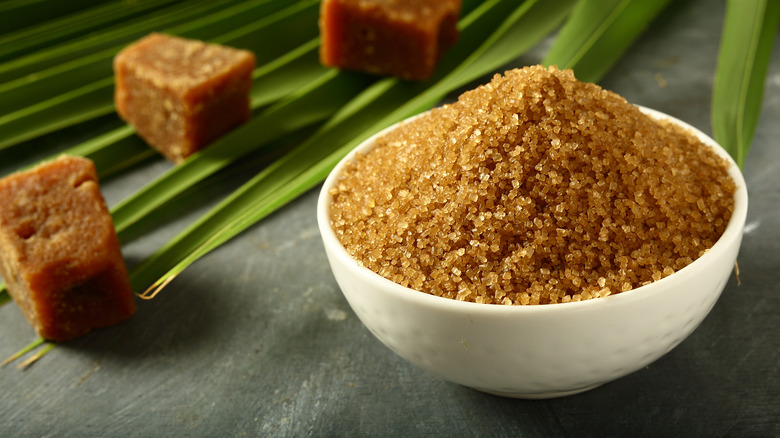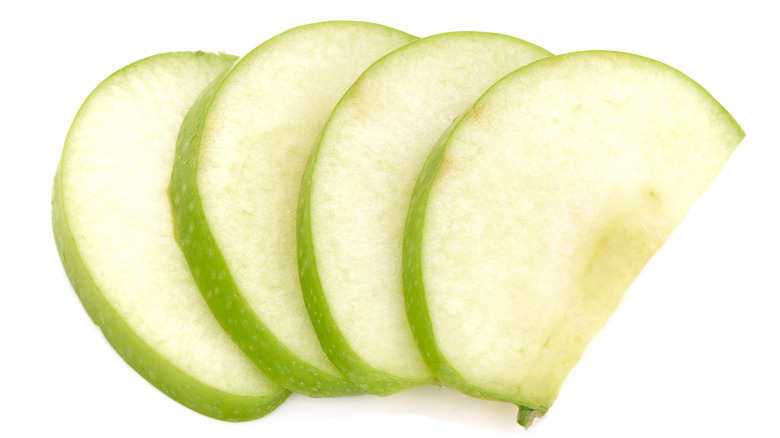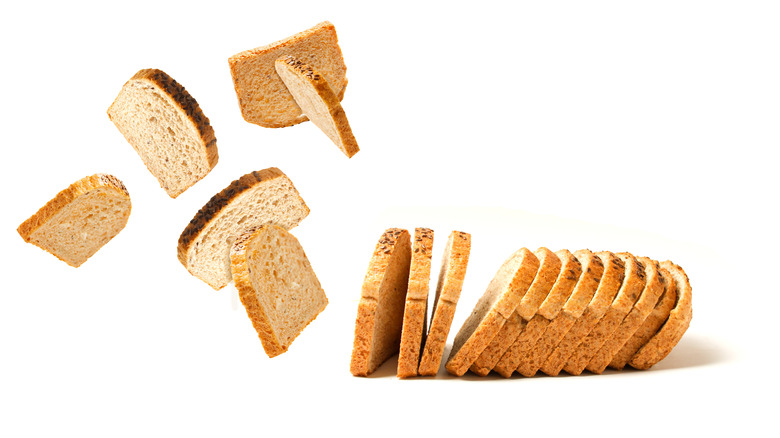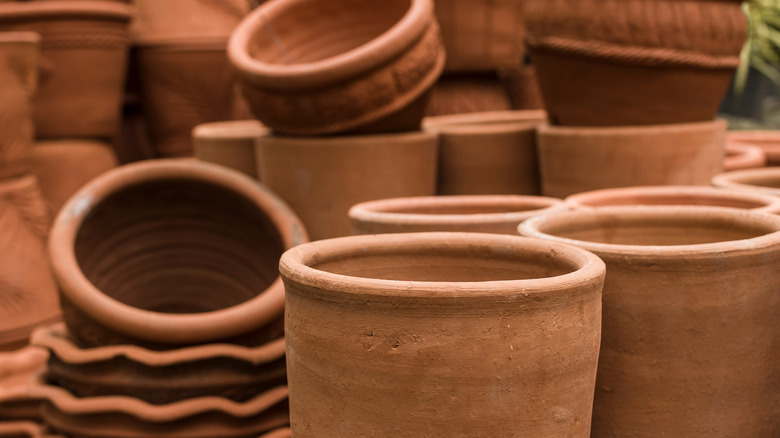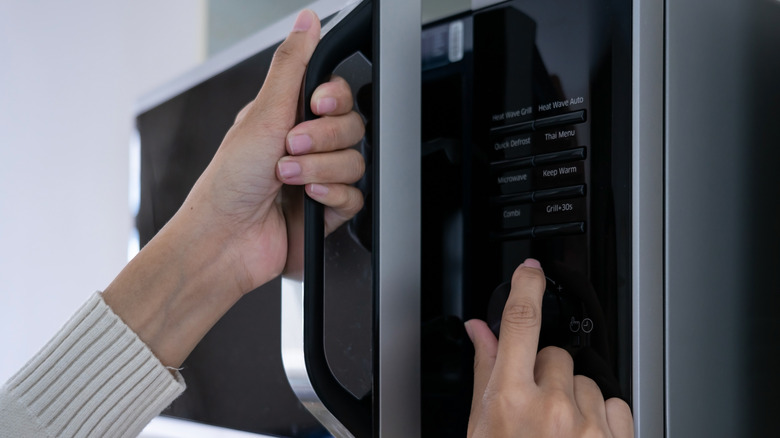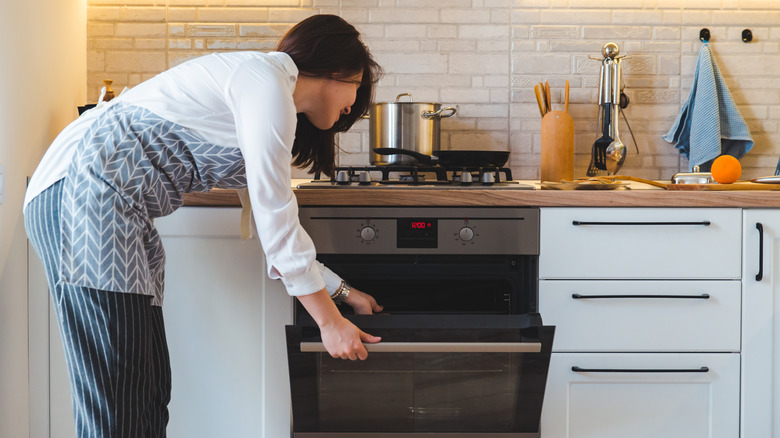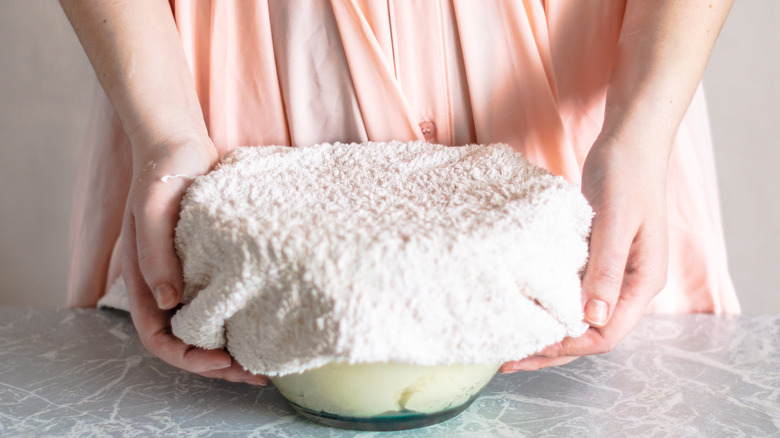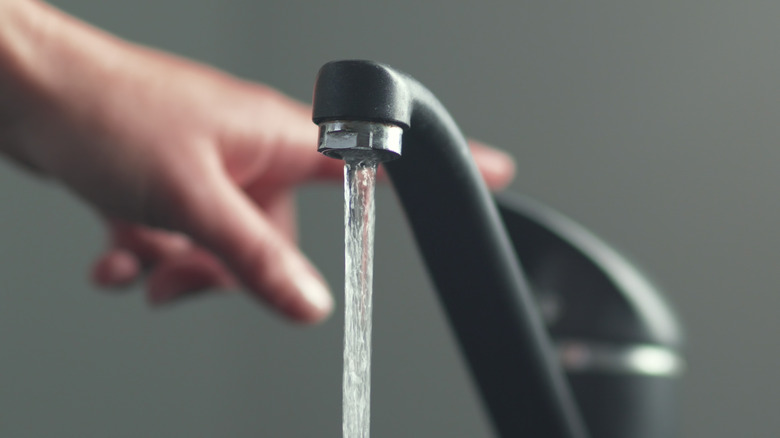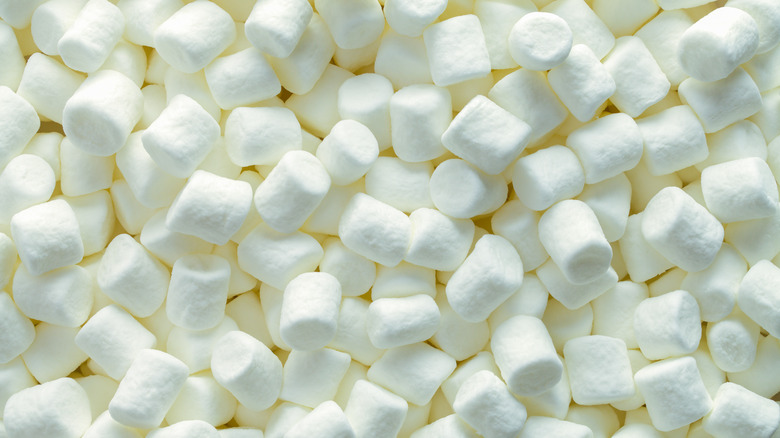8 Best Ways To Soften Brown Sugar
When you set your mind to baking cookies or any other sweet treat, chances are you would like to enjoy them sooner rather than later. If you have ever reached into your pantry and picked up an inexplicably rock-hard package of brown sugar, then you will want to read on for ways to avoid this unfortunate result. Most importantly, let's start by clarifying why your brown sugar meets this fate, essentially making it unusable in most recipes.
Unlike white sugar, Epicurious points out that brown sugar contains molasses which lends a golden color, caramelized aromas, and stickiness to the sweetener. Since molasses contains liquid, if brown sugar is not perfectly sealed, the humidity within will evaporate over time. This natural process explains why your sugar has the time to harden between baking sessions. Since the average home baker probably isn't keeping tabs on their brown sugar on a regular basis, trying to bake with it can be disappointing if you haven't been storing it properly.
If you are diligent and want to maintain your sugar at the perfect texture, Bake or Break recommends sealing it in a ziplock bag inside an airtight container. However, if it's already too late, a number of tricks can help reverse the state of your brown sugar, making it ready for baking.
1. Sliced apples
Epicurious suggests adding slices of apples on top of the sugar, spreading them out across the surface to target more area. The source tested a quarter of a sliced apple per eight ounces of sugar and noted that the softening effect began after about two hours. All the same, you may want to plan for more time as The Spruce Eats recommends leaving them overnight. It is best not to leave the apples in indefinitely because the Food Network warns that they may become slimy. To prevent this effect, be sure to use crisp firm fruit to avoid mushy remnants mixed in with your sugar.
This trick is especially useful if you are planning to bake something with apples or warm spices since the fruit will impart some of its flavor to the sugar (via Epicurious). To avoid too much transfer of flavor, as soon as the sugar starts to soften it's a good idea to remove the slices (and why not enjoy them as a snack?). If you realize that your brown sugar needs moistening ahead of time and you want a technique that uses something you probably already have, sliced apples will be up to the task.
2. Sandwich bread
For another method that requires the use of a household staple, place a slice of sandwich bread flat on top of the brown sugar and seal it shut inside a container. Bread has plenty of moisture which usually evaporates into the air causing it to become stale, according to Epicurious. The source advises that you harness this natural process by combining the bread and brown sugar in an enclosed space in order for the moisture from the bread to transfer itself onto the sugar.
While you'll notice some softening after a couple of hours, The Gardening Cook indicates that results are most effective between eight and 24 hours. Unlike with apples, bread will not modify the flavor of the sugar, but it may cause it to lighten in color as the molasses stains the bread (via Bob's Red Mill). According to the Food Network, a slice of bread at the bottom of your sealed container of brown sugar can be a great solution to prevent hardening.
3. Terra cotta
For some curious reason, terra cotta has properties that make it quick and efficient at softening brown sugar. Specialty kitchenware stores or online retailers sell cutesy terra cotta pieces made for this exact purpose. While they are often shaped as fun animals or other creative designs, The Gardening Cook confirms that all terra cotta will work, even a piece from a broken pot.
First, you'll need to soak the clay in water for about 30 minutes in order for it to absorb moisture. Once the time is up, dry off the extra water and place the piece of terra cotta into the sugar overnight. With no other efforts required, your brown sugar should be perfectly supple and ready to use for baking the very next day. If you plan to continuously keep the piece of clay in your sugar, Bake or Break advises repeating a 30-minute soak every couple of months to keep it working effectively.
4. Microwave
If you realize your brown sugar is hard as a rock in the midst of a baking time crunch, you probably won't have time to try one of the slower methods of softening it. Thankfully, standard kitchen appliances can be helpful although you'll have to monitor the process carefully. Since food can get quite hot in a microwave, The Gardening Cook recommends to proceed with caution by setting the power to half the intensity. This will help limit the chance of accidentally melting the sugar, ultimately caramelizing it.
Place the brown sugar in a microwaveable bowl and cover it with a damp towel or paper towel (via Epicurious). Then, heat the sugar for 20 seconds at a time, checking on it in between and fluffing it with a fork to loosen it up. Depending on the state of your sugar, this may take a couple of minutes but be sure to keep a close watch to avoid a pile of goop. Home Cook Basics suggests an alternative method that requires you to place your bowl of brown sugar in the microwave along with a bowl filled a third of the way with water. Heat the contents for 30 seconds, pausing to shake the sugar up with a fork and resuming in 15-second increments until it is soft.
5. Oven
Since heat helps soften up brown sugar, the oven is another useful appliance to assist with the task. While many sources, including All Recipes, vouch for this method, the folks at Epicurious didn't witness much change in the texture of the sugar and instead remarked that it might have further dried out. Nonetheless, for a quick and speedy solution, many bakers swear that placing brown sugar in the oven sealed in aluminum foil for about 5 minutes at 250 F works (via Bake or Break).
Alternatively, Food52 recommends spreading the brown sugar out on a baking tray lined with parchment paper. You will want to check the state of the sugar every couple of minutes as it cooks, stirring it with a fork to loosen up the hard chunks. Again, be careful not to let the brown sugar melt or you will have to get creative to use up the remains.
6. Damp towel
For patient bakers who are willing to wait for their brown sugar to soften overnight if it means minimal hands-on effort, this breezy option is the perfect solution. Place the brown sugar in a bowl and drape a damp tea towel over the surface to keep the opening covered (via Bake or Break). Make sure that the towel is not actually touching the sugar so that there is some air circulation between the two. This will leave space for a transfer of moisture between the two products.
Bake or Break indicates that a similar method can be used if your brown sugar is in a tall sealed container. If this is the case, simply cover the opening with plastic wrap and add the damp towel over top. By the time you are awake and ready to bake the following day, your sugar should be up to your standards.
7. Water
Since the primary issue with hardened brown sugar is a lack of moisture, an obvious solution is to reintroduce water. Quantities certainly matter or you'll end up with a sludge-like paste and nowhere closer to the soft brown sugar texture you are seeking. According to Serious Eats, a ratio of three-fourths of a teaspoon of water to eight ounces of brown sugar is ideal. The source recommends adding the sugar and water into a ziplock bag, sealing it, and heating the contents in the microwave for 15 seconds. Then, use your hands to spread the moisture throughout the sugar.
If you want to limit microwave use, simply keep the sugar and water sealed in the plastic bag for around half an hour as water becomes absorbed throughout (via Serious Eats). To distribute the moisture evenly, go ahead and massage the sugar through the bag with your hands until it appears soft.
8. Marshmallow
As with many handy tricks, what works for one person doesn't always pan out well for the next. Considering that the texture of brown sugar varies with moisture content, the overall conditions of your kitchen or pantry can greatly affect the state of your sugar. In turn, there may be significant differences between sugar stored in an air conditioned home compared with a heated room. These fluctuations can occur geographically and seasonally so it's always worth it to test a method out yourself.
Food52 recommends keeping a marshmallow in your sealed container of brown sugar to maintain the humidity. While it is touted as an easy approach, requiring you to add just one marshmallow into your container, the Food Network advises against it, saying that after trying it out, they found the concept had zero results.
Other bakers suggest adding chunks of brown sugar to a food processor. That said, Bake or Break thinks it is a waste of time, explaining that it won't solve the underlying issue, which is a lack of humidity.
